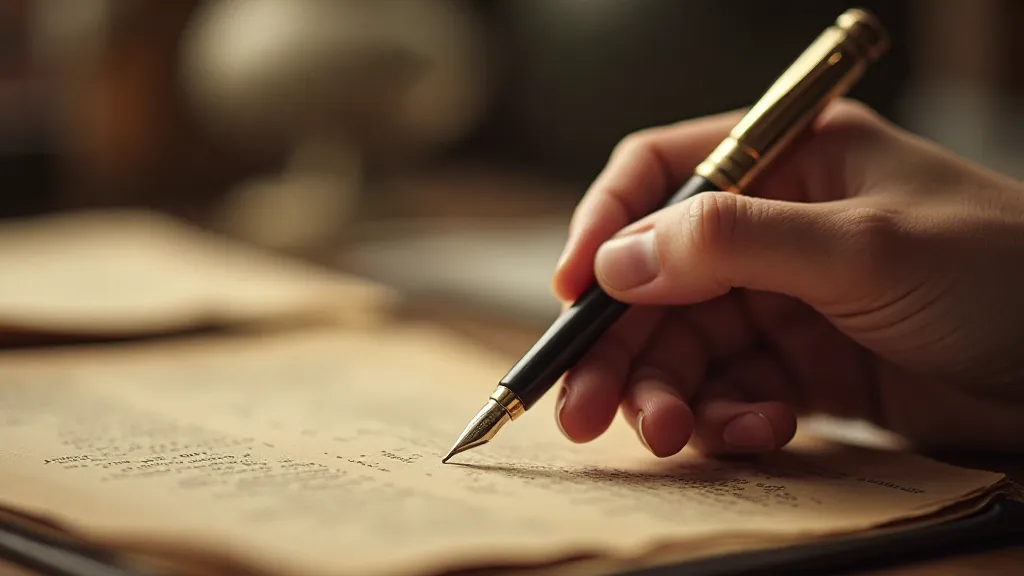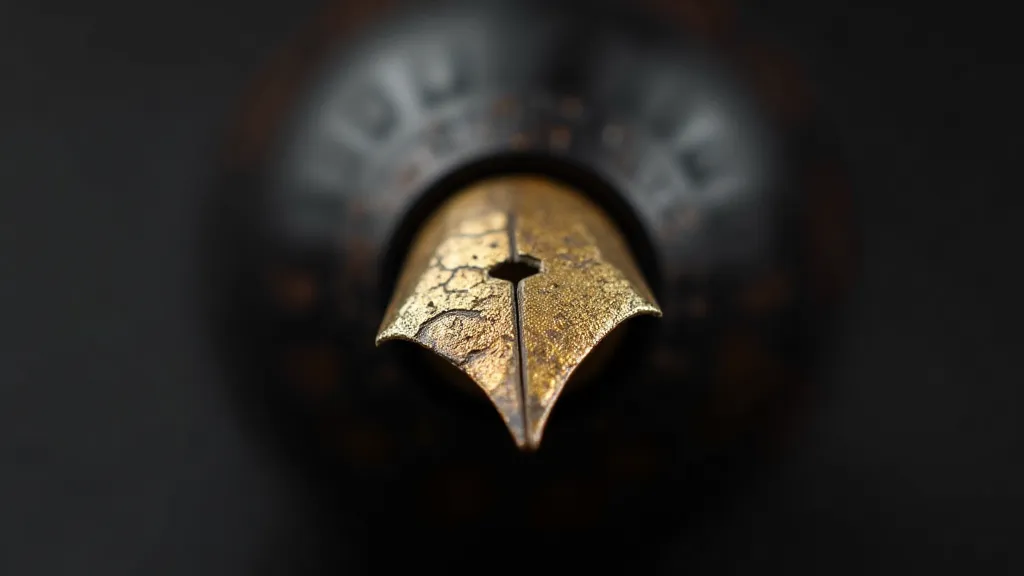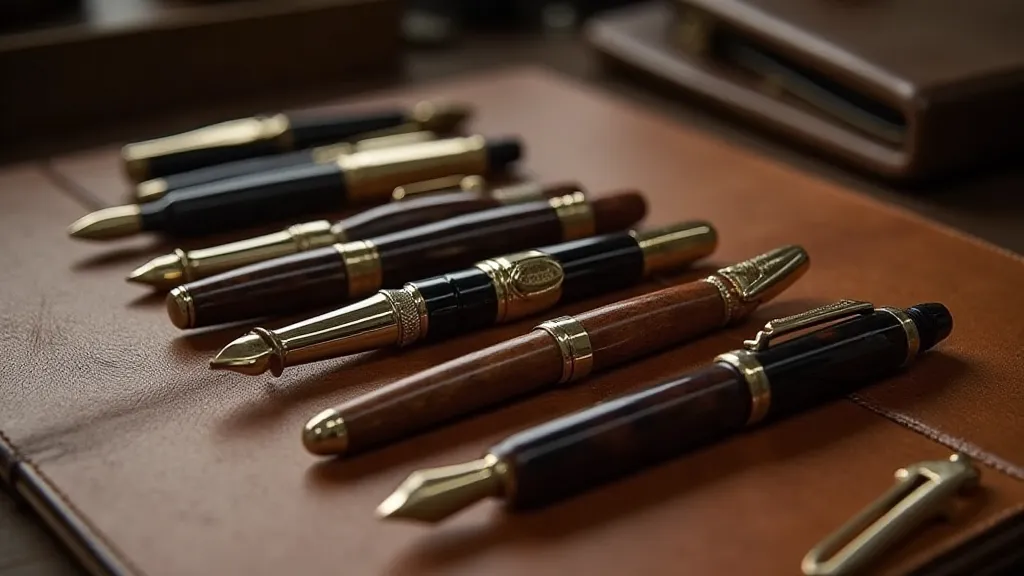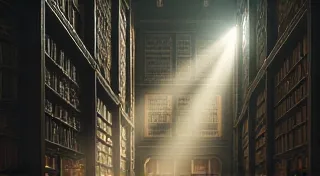From Fountain to Fine Point: Reimagining Pen Design in the Digital Age
There’s a certain poetry to holding a well-made antique pen. It’s not just the weight, the cool metal against your fingertips, or the subtle click of the lever or twist mechanism. It’s the whisper of history contained within that small object. Generations of hands have guided it, imbuing it with stories of correspondence, creativity, and connection. As we navigate a world increasingly dominated by digital writing tools, the continued existence, and even resurgence, of these beautiful relics begs the question: what is the enduring appeal of antique pens, and how can the traditions of their creation find a place in the digital age?
My own fascination began unexpectedly. As a child, I found a box of my grandfather's belongings after he passed. Amongst old photographs and worn leather wallets was a Parker Duofold – a vibrant red and black fountain pen, its nib slightly tarnished. I didn’t understand its significance then, but the moment I uncapped it and felt the ink flow onto paper, a small piece of my grandfather, and a much larger piece of history, connected with me.

The Golden Age of Writing Instruments
The late 19th and early 20th centuries were the golden age of writing instruments. The rise of mass production, coupled with a culture obsessed with refinement and personal expression, fueled innovation and a hunger for beautiful, functional pens. Companies like Waterman, Montblanc, Parker, and Sheaffer – names still revered today – competed fiercely, pushing the boundaries of engineering and design. These weren't just tools; they were status symbols, testaments to success and discerning taste. Each brand cultivated a distinct aesthetic and a loyal following.
Waterman, for example, pioneered the self-filling fountain pen, making them more accessible to a wider audience. Their “button filler” mechanism, and later the iconic “vacumatic” system, were groundbreaking innovations. Montblanc, emerging from the workshops of Simplo Gütermann & Co. in Hamburg, Germany, focused on luxury and durability, quickly establishing itself as the pinnacle of fountain pen craftsmanship. Parker, under the visionary leadership of George Parker, embraced new materials and distribution methods, making his pens globally recognized. Sheaffer, known for its distinctive clip design and innovative filling systems, built a reputation for reliability and elegance.
The Challenges of a Digital World
The advent of computers and, later, tablets and smartphones, presented an existential threat to the pen industry. Why struggle with ink flow, nib sizes, and potential leaks when you can type effortlessly on a backlit screen? The decline was swift and significant. Many pen manufacturers shifted their focus to ballpoints, a less demanding and far more affordable alternative. The allure of the fountain pen, with its intricate mechanisms and demanding technique, seemed to fade into obscurity. It’s a poignant reflection of how quickly obsessions shift – almost an ink's ephemerality, if you will – and how even the most cherished objects can fall victim to obsolescence.
However, what initially appeared to be a death knell proved to be something of a catalyst. A small but dedicated community of collectors and enthusiasts began to champion the antique pen, recognizing its inherent value beyond its practical function. This wasn't just about nostalgia; it was about appreciating the artistry, the engineering, and the tactile pleasure of writing with a handcrafted instrument. The slow, deliberate act of putting pen to paper became a conscious rebellion against the speed and ephemerality of the digital realm.
The Resurgence of Craftsmanship
Today, we’re witnessing a quiet resurgence in the popularity of fountain pens. This isn’t driven by mass market appeal; it’s fueled by a desire for authenticity and a rejection of mass-produced goods. The act of writing with a fountain pen has become a ritual, a moment of mindfulness in a hyper-connected world. This renewed appreciation extends to antique pens, transforming them from forgotten relics into cherished collectibles. It’s a complex narrative, where the very objects once deemed relics are now sought after for their ability to provide an experience often lost in our modern, fast-paced society. The narrative explores a larger point: the mythology of luxury pens, and how our perception of value shifts over time.
What’s truly remarkable is how pen makers are adapting. While some are meticulously restoring vintage pens, preserving their original beauty and functionality, others are embracing modern materials and techniques while remaining true to the principles of traditional craftsmanship. The challenge lies in balancing innovation with reverence for the past. Can the precision and aesthetics of the past be reimagined for the present, appealing to a generation that values both functionality and beauty? The answer, it seems, is a resounding yes.
Consider the rise of micro-brands, often run by passionate artisans who hand-craft every component of their pens. These makers are often inspired by vintage designs, but they aren't afraid to experiment with new materials like acrylic resins and titanium. They understand that the value of a pen isn't just in its appearance; it's in the story behind it – the hours spent honing their skills, the passion they pour into each piece. They are fostering a new community around the appreciation of writing instruments, connecting with consumers who crave something more than just a disposable pen. This is about creating an experience - almost like creating a cartographer of moments with each stroke of the nib.

Collecting and Preservation: A Gentle Art
Collecting antique pens isn’t just about acquiring beautiful objects; it's about preserving a piece of history. Restoring a vintage pen can be a rewarding, albeit delicate, process. It requires a gentle touch, a keen eye for detail, and a deep understanding of the pen's original mechanics. Replacing a cracked lever cap, cleaning a clogged ink sac, or polishing a tarnished nib – these are all acts of preservation, ensuring that these treasures can be enjoyed for generations to come.
The value of an antique pen is influenced by a variety of factors: its brand, model, condition, rarity, and originality. A pristine, unrestored example of a rare Parker Duofold from the 1920s will command a significantly higher price than a well-worn example that has undergone numerous repairs. The provenance of a pen – its history of ownership – can also add to its value. A pen once owned by a famous author or historical figure would be a truly exceptional find.
Beyond the monetary value, however, lies the intrinsic value of holding a piece of history in your hand. The knowledge that you are connected to the countless individuals who have used and cherished that pen over the years is a truly humbling and enriching experience.

A Legacy of Ink and Ingenuity
The story of antique pens is more than just a tale of ink and ingenuity; it’s a testament to the enduring power of craftsmanship and the human desire to create objects of beauty and utility. While the digital age may have redefined how we communicate, it hasn't diminished the appeal of the written word or the satisfaction of holding a finely crafted writing instrument. As we navigate the complexities of modern life, perhaps the simple act of writing with an antique pen can offer a moment of respite, a connection to the past, and a renewed appreciation for the art of making.





